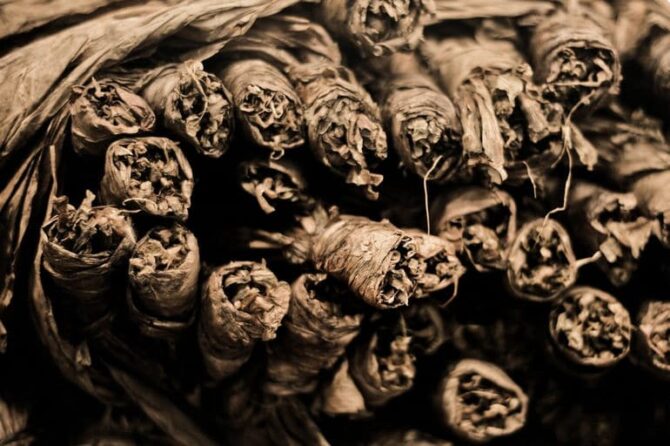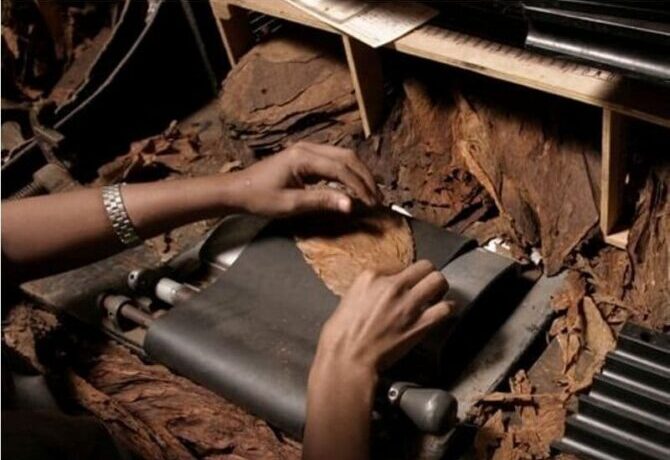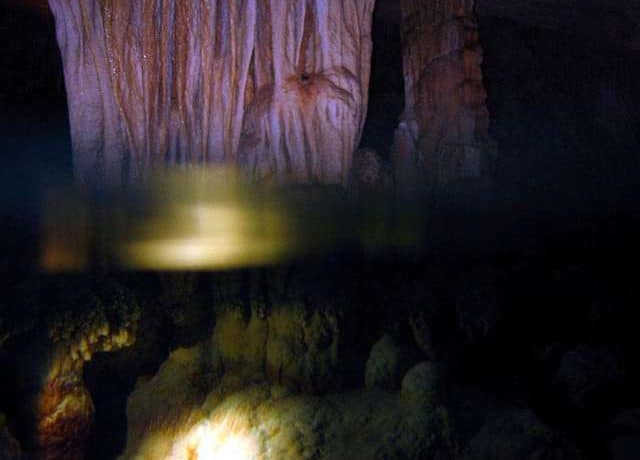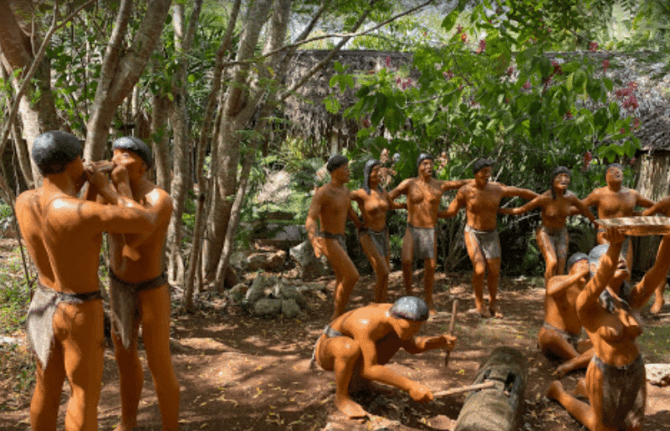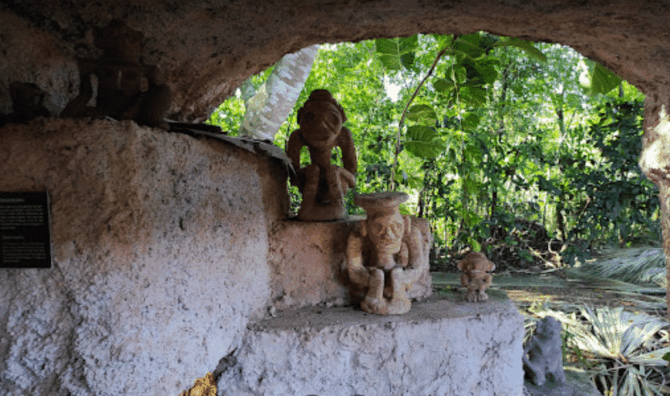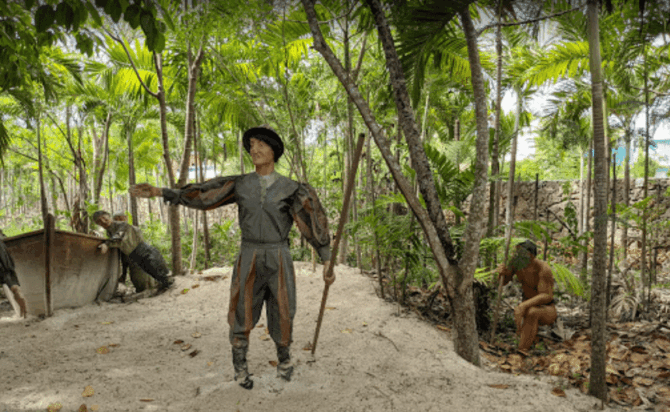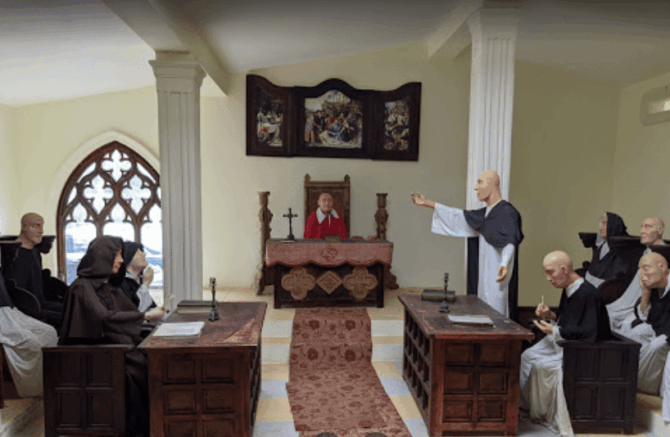The second most important seaside resort of the country and the third most populous city of the Dominican Republic is located in the south-eastern part of the island of Haiti. Officially, La Romana was founded in 1897, now this city occupies an area of 185 square kilometers. km, where 227.85 thousand people live. La Romana attracts numerous tourists as a seaside resort with a wide selection of luxury villas and great opportunities for spending time on the beaches. The surroundings of the city are rich in natural objects that cause sincere interest among curious travelers.
La Romana: why does the seaside resort attract foreign tourists?
The city is 112 km east of the center of Santo Domingo and 78.3 km from the airport in Punta Cana. Thanks to the tropical climate and the influence of the Caribbean Sea, throughout the year in La Romana favorable conditions are established for entertainment on the beaches and water. The air at the resort warms up from + 29.7 in winter to + 37.7 in summer, the water, respectively, from + 26.6 to + 29.2. Foreign tourists actively come to La Romana, pursuing several goals:
- swimming in the warm waters of the Caribbean Sea;
- fascinating multi-hour jeep safaris in Cotumbanama and Los Antises – nearby national parks;
- diving and spearfishing;
- boat trips on modern comfortable yachts, motor boats and comfortable catamarans to the islands located near the coast of the city;
- playing golf on perfectly equipped courses;
- relaxing holidays in the villas of Casa de Campo – a luxury resort that occupies a large part of the city – and on the beaches surrounded by coconut groves and covered with pure white sand.
No less interesting are the excursion programs offered to guests of La Romana. The city is not rich in historical monuments. However, in its immediate vicinity there are several natural sites that will certainly interest travelers.
The most favorable period for visiting the resort and sightseeing is from December to March. During these months, dry warm weather prevails. The amount of monthly precipitation is from 34 to 47.8 mm. The rainy season lasts from August to September. At this time, from 107.7 to 121.6 mm of precipitation falls every month.
Attractions La Romana on map
Saona Island
One of the most picturesque natural corners of the Dominican Republic is located 43 km southeast of La Romana. Saona Island covers an area of 110 square kilometers, which is approximately equal to the area of Paris. However, in terms of the number of inhabitants, it is significantly inferior to the French capital. On the island there are three small fishing villages, the population of which is about 1.2 thousand people.
Saona was discovered by X. Columbus – the famous Spanish navigator – in May 1494 According to one of the versions, which is adhered to by most Western European scientists, the island was named after Savona – an Italian city where the famous traveler-explorer lived from 1472 to 1476.
- more than 40 species of fish;
- sandy beaches: Gato, Saona, Bonita, El Torro and Konto;
- dozens of lagoons;
- 539 species of plants, including endemic ones;
- karst caves and grottoes;
- 124 species of mollusks.
In the coastal waters you can see whales, manatees, dolphins, turtles, starfish and other inhabitants. On the territory of the island there are storks, green parrots, pigeons and gulls. Tour companies in La Romana and Punta Cana organize excursions to Saona Island. The duration of each event is from 8 hours to 2 days. The cost of excursions is from 60 to 300 $.
From La Romana you can reach the island by catamarans, motor boats or yachts. Tourists usually do this as part of excursions. The most favorable period for visiting Saona is March and the winter months.
Address: Isla Saona, 32000.
Website: https://www.toursaonaisland.com/
Catalina Island
Christopher Columbus is credited with the discovery of many Caribbean islands. One of them is Catalina, located 27.8 km northwest of Saona and 2 km south of La Romana. The area of the compact island is 9.6 sq. km. Now Catalina has the status of a national park, where tourists arrive for several purposes:
- swim in the azure waters of the Caribbean Sea;
- relax on a long beach, evenly covered with silky white sand;
- go scuba diving or snorkeling and snorkeling (diving or snorkeling);
- sunbathe on the coast, lying on comfortable sun loungers under the shade of coconut palms;
- shoot on a smartphone or camera local landscapes familiar from popular science and feature films;
- go fishing on a pleasure boat at sea; prey of lucky lovers of this activity: lobster, horse mackerel, pargo fish or mackerel.
On the beach of the island, bars and cafes are open for tourists, where you can drink refreshing juices and cocktails, as well as satisfy your hunger with delicious dishes made from fish or seafood. There are also spacious gazebos, where guests of Catalina take refuge from the midday sunlight.
70 meters from the coast of the island begins the territory of the Living Museum in the Sea – an underwater museum founded in 2011 In this place you can see the remains of Quedagh Merchant (Quidagh Merchant) – a merchant ship found by researchers at Indiana University in December 2007. Quedagh Merchant sank in 1699.
The skeleton of the vessel and several anchors are located at a depth of 3 m. 26 guns found by researchers are exhibited in the halls of the Indiana Museum in the United States. Divers regularly go scuba diving to see with their own eyes the remains of a pirate ship. Not far from quedagh Merchant is the lesser-known tourist ship “Guadeloupe”, which sank in 1724.
Travelers go to Catalina on pleasure boats and catamarans as part of excursions that are organized in the hotels of La Romana. The cost of the event is from 30 to 150 $. The most favorable period for visiting the picturesque island is the dry season.
Address: Isla Catalina, La Romana 22000.
Web page: https://www.visitarepublicadominicana.org/isla-catalina
Del Este National Park
In September 1975, Del Este, a national park that received UNESCO World Heritage status in 2001, was founded on two islands – in the extreme south-east of Haiti and Saone. The total area of the protected area is 418 sq. km. In 2014, the park was renamed and became known as “Cotubanama” (Cotubanama) in honor of the leader of the Tribe of Indians Tain (another spelling is Taino), who fought against the Spanish colonialists. The national park is rich in objects of great interest to curious travelers and active tourists:
- over 500 species of plants;
- underground lagoons;
- tropical, mangrove, dwarf and subtropical forests;
- more than 300 species of birds, including such rare ones as ash-faced owls, lizard cuckoos and crowned pigeons;
- about 400 grottoes and karst caves; in some of them you can see traces of the presence of the Secret Indians, who lived here 5-10 centuries ago;
- coral reefs;
- endangered species of animals: houthias (relatives of guinea pigs), manatees, hedgehog rats, bottlenose dolphins and slit-teeth.
Every year, thousands of travelers come to the national park to explore the caves, snorkel, walk along the trails and explore the local fauna and flora. Travel companies organize dozens of exciting excursions from nearby resorts, including La Romana. The cost of the event is from 50 to 100 $.
Travelers can independently reach the entrance to the park, located in Bayahibe – a compact city. The path runs from La Romana on the Autop road. del Coral. In Bayahibe, the official office of the park is located, where bracelets are purchased, giving the right to visit “Cotubanam”. From here you can also reach Saona.
Address: Parque Nacional del Este 23000.
Web page: https://visitdominicanrepublic.com/wildlife-nature/cotubanama-national-park-parque-del-este/
Cigar Factory
For tourists who get acquainted with national traditions and crafts, a big gift will be a visit to tabacalera de Garcia – a cigar factory founded in 1971. The cigar factory is considered the largest on the planet. Cigars are made by hand without the use of any machines or mechanisms.
The factory is located in the north of the city. Tourists can visit the enterprise by joining the tour. The factory is available to guests from Wednesday to Friday from 8:00 to 17:00. Visitors can listen to the guide’s story about the production process of premium cigar brands:
- Vega Fina;
- Santa Damiana;
- Don Diego;
- Romeo y Julieta.
Guests can take part in the cigar wrapping process if they wish. There is a shop on the territory of the factory. Here you can buy gift boxes with sets of cigars, lighters and ashtrays. The duration of the tour is from 60 minutes to 1 hour 30 minutes, the cost is from 20 US dollars.
Address: Tabacalera de Garcia, Zona Franca, 1, La Romana 22000.
Web page in the social network: https://www.facebook.com/Tabacalera-de-Garcia-131522416907148/
City of Artists Altos de Chavón
One of the most popular places among foreign tourists is located 14 km east of the center of La Romana. The Altos de Chavon, a city of artists and artisans located on the high bank of the picturesque Chavón River, was built from 1976 to 1992.
Roberto Copa and Oscar de la Renta, designers from Italy, and José Antonia Caro, a Dominican architect, participated in the implementation of the project. Altos de Chavón is a village where the buildings are stylized as an architectural style of the XV-XVI centuries:
- restaurants: La Piazetta, Chilango Taqueria and others;
- design school, where students study world culture, painting, master the art of photography, fashion, various types of design; the educational institution opened its doors in 1983;
- the Church of St. Sviatoslav, illuminated in 1979 by John Paul II, Pope; Catholic Masses are held in the church on Saturdays and Sundays; entrance to the church is free; weddings are also held here;
- The Archaeological Museum, which opened its doors to visitors in 1981; in the halls of the cultural institution, more than 3 thousand artifacts telling about the pre-Columbian history of the country are exhibited; entrance to the museum is free;
- an amphitheater, stylized as antique stages; the building, erected in 1982, accommodates up to 5 thousand spectators; theatrical and musical performances with the participation of world celebrities are held here; at various times on the stage of the theater performed F. Sinatra, Pet Shop Boys, X. Iglesias, J. Lopez, Sting.
The streets of the City of Artists are paved with medium-sized cobblestones. The walls of the buildings are made of limestone, processed terracotta and coral stones. The most suitable time to visit Altos de Chavón is the winter months and the first half of spring.
Most travelers visit the City of Artists as part of numerous excursions. Transfers are available from the hotels of La Romana. The cost of excursions is from 36 to 105 $ and above. The photo shoot must be arranged in advance at the contact numbers listed on the Altos de Chavón website. The cost of the event is from $ 200 for local residents and $ 275 for foreign guests.
Tourists who prefer to travel independently should take into account that the way to the City of Artists from La Romana consists of five stages, including several roads:
- Autop. del Coral;
- Carr. La Romana–Higuey (turn at La Romana Airport (1st exit to the right));
- Rey Juan Carlos I;
- Carr. Altos de Chavon;
- Chavon Blvd.
The most favorable time to visit Altos de Chavón is winter and the first half of spring. Entrance to the City of Artists is available from 8 a.m. to 5 p.m. Times may vary. The ticket price is $5.
Altos de Chavón is part of the Casa de Campo resort complex. It is better to visit the city of artists on your own, since excursions last no more than 50 minutes, which does not give the opportunity to explore the unique place in your own way.
Address: Casa de Campo, La Romana, Higuey Hwy, 22000.
Web page: https://www.casadecampo.com.do/experiences/altos-de-chavon/
Cave of Wonders
In 1926, about 22 km west of La Romana, a natural object was discovered that foreign tourists did not know about for a long time. Then the locals called the underground labyrinths the Cave of the Jaguar. In 1949, a group of researchers, led by Professor F. Richez, managed to discover cave paintings created by the Indians secretly from 5 to 10 centuries ago.
Now this natural object is called Cueva de las Maravillas – Caves of Miracles. Underground corridors, equipped with a 240-meter pedestrian path, strong ramps, observation platforms, elevator and lighting, stretch for 800 m. Depth reaches 25 m. Cueva de las Maravillas is available daily from 9 a.m. to 4 p.m. The cost of a child ticket is 50 pesos, an adult – 100 pesos.
Most hotels in La Romana can book an excursion to the Cave of Wonders. The way from the resort to the destination is along the road: Autovia del Este. When you reach the airfield located next to the cave, you need to turn right and continue to the end point. Tourists visit the underground corridors in any season.
Address: Carr. La Romana–San Pedro de Macoris, 16 km. Cueva de las Maravillas, 21000.
Website: https://cuevadelasmaravillas.com.do/
Cave del Chico
On the territory of the national park “Cotubanama” there is a small karst cave Cueva del Chicho (there is a spelling – de Chico). Since 1975, Cueva del Chico has been available for visiting. Underground corridors are practically not equipped with anything and are devoid of air pockets. This makes it much more difficult to get acquainted with stalactites, petroglyphs, stalagmites and water tanks located inside the cave.
The length of the Cueva del Chico is about 120 m, the depth is up to 12 m. Most amateur explorers visiting Cueva del Chico are experienced divers. Their purpose is to dive and swim in the water tunnels of the cave. The way from La Romana to Cueva del Chicho runs along the roads: Autop. del Caro and Carr. Bayahibe. It is important not to miss the left turn at the sign with the inscription Padre Nuestro.
Before going to the cave, ordinary tourists should think about their physical readiness. Having decided to visit, it is important not to forget the flashlights.
Address: Cueva del Chico, Bayahibe, La Altagracia, 23000.
Web page: https://showcaves.com/english/do/caves/Chicho.html
Padre Nuestro Cave
Just 850 m southwest of the cave del Chico is the Cueva Padre Nuestro. The natural site is also often visited by divers. The name of the cave can be translated as “Our Father”. The length of Cueva Padre Nuestra is 200 m, the depth is up to 20 m. Inside the cave you can see several objects that are interesting for curious travelers:
- stalactites sparkling by the light of lanterns;
- dark grottoes;
- tunnels filled with groundwater.
The first thing that travelers see when approaching the cave is the arched entrance. The descent is a multi-stage staircase. Experienced instructors help tourists explore the underground tunnels. The path to Padre Nuestro follows the route to Cueva del Chicho. The cave is available for visiting throughout the calendar year. Admission is free.
Address: Cueva Padre Nuestro, Bayahibe, 23000.
Conquista Park
One of the most interesting theme parks of the Dominican Republic is located 14 km east of La Romana. Conquista Park includes 27 expositions reconstructing scenes of the history of the colonization of Haiti by the Spanish conquistadors. Audio tours in six European languages are available for visitors to Conquist Park:
- French;
- Spanish;
- Russian;
- German;
- Italian;
- English.
The ticket price is $ 6 for children and $ 12 for adult visitors. The park is open from 8:00 to 18:00 (Monday to Friday) and 8:00 to 12:00 (Saturdays). Excursions to Conquista Park can be booked at any hotel in La Romana. Independent tourists drive along the Autop road. del Coral to the Carr highway. Boca de Chavon. Then turn left and continue to the park.
Address: Conquista Park, La Estancia, Bayahibe, 23000.
Website: http://www.conquistapark.com/index_m.html
La Romana – a resort where tourists are waiting for vivid impressions
Among the Dominican resorts, La Romana stands out primarily for the natural attractions of the surrounding area. This relatively small picturesque region will give tourists a lot of vivid impressions. National parks, rich in plants, caves, islands, lakes, animals and birds are the main asset of La Romana and the surrounding area of the resort. Almost every traveler who comes to this picturesque region of the Dominican Republic, after getting acquainted with the local natural sites, dreams of returning here many more times.

















